Bastion Fortress on:
[Wikipedia]
[Google]
[Amazon]
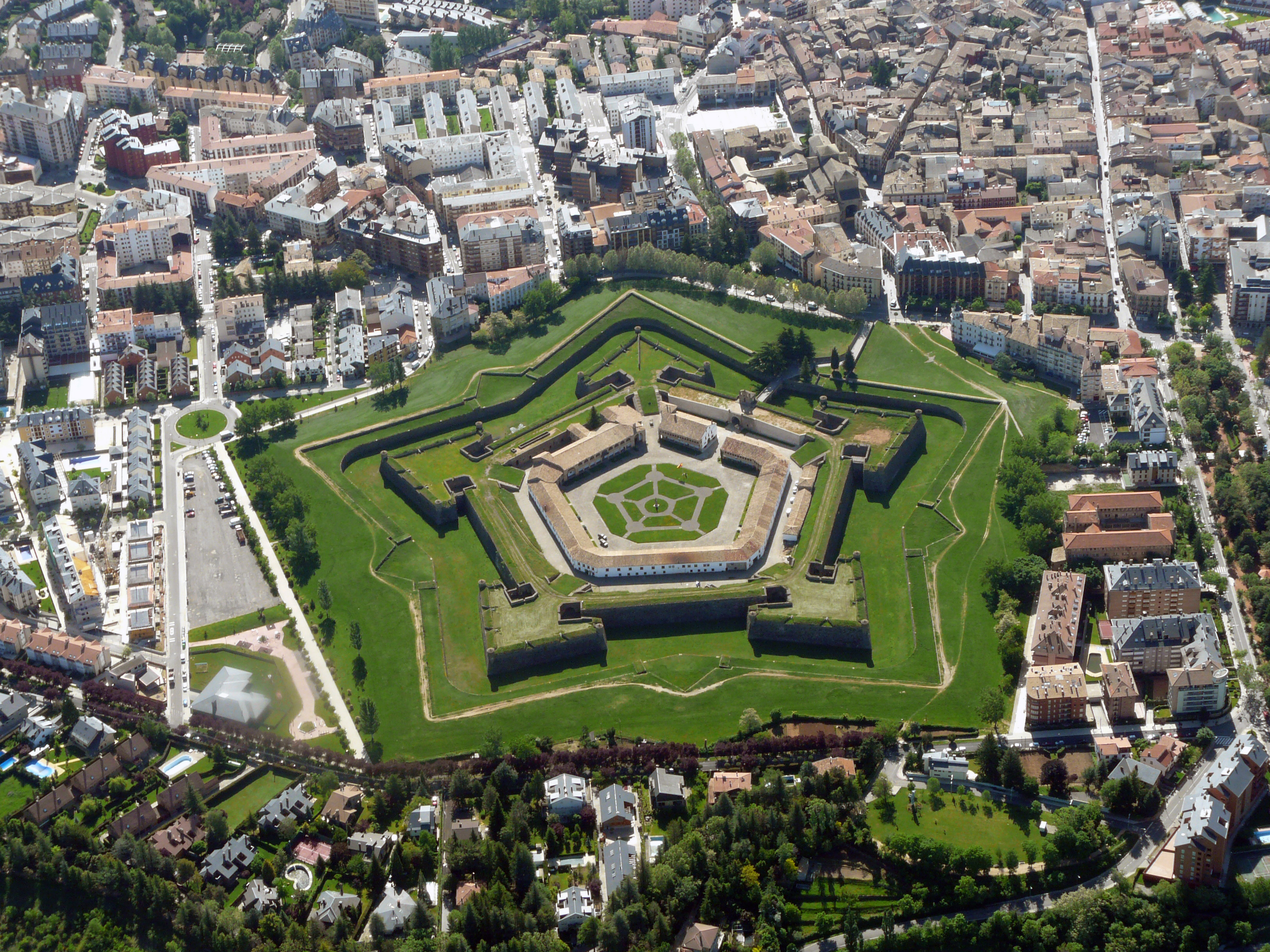

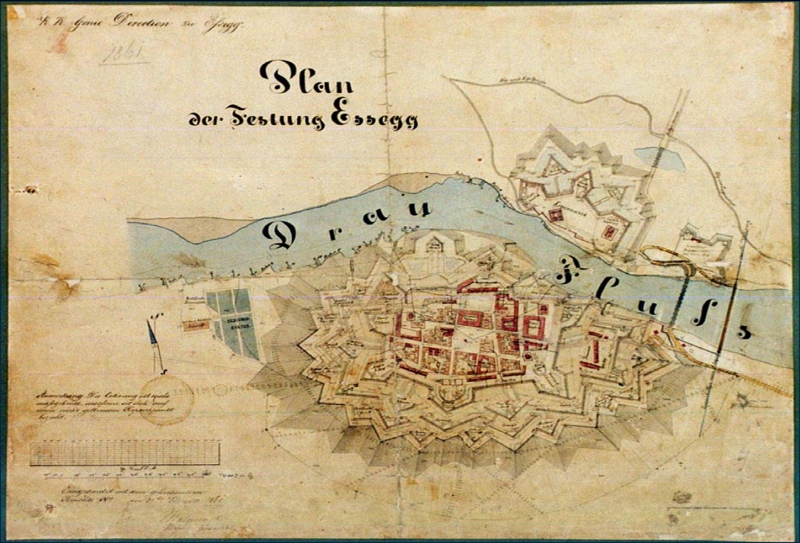
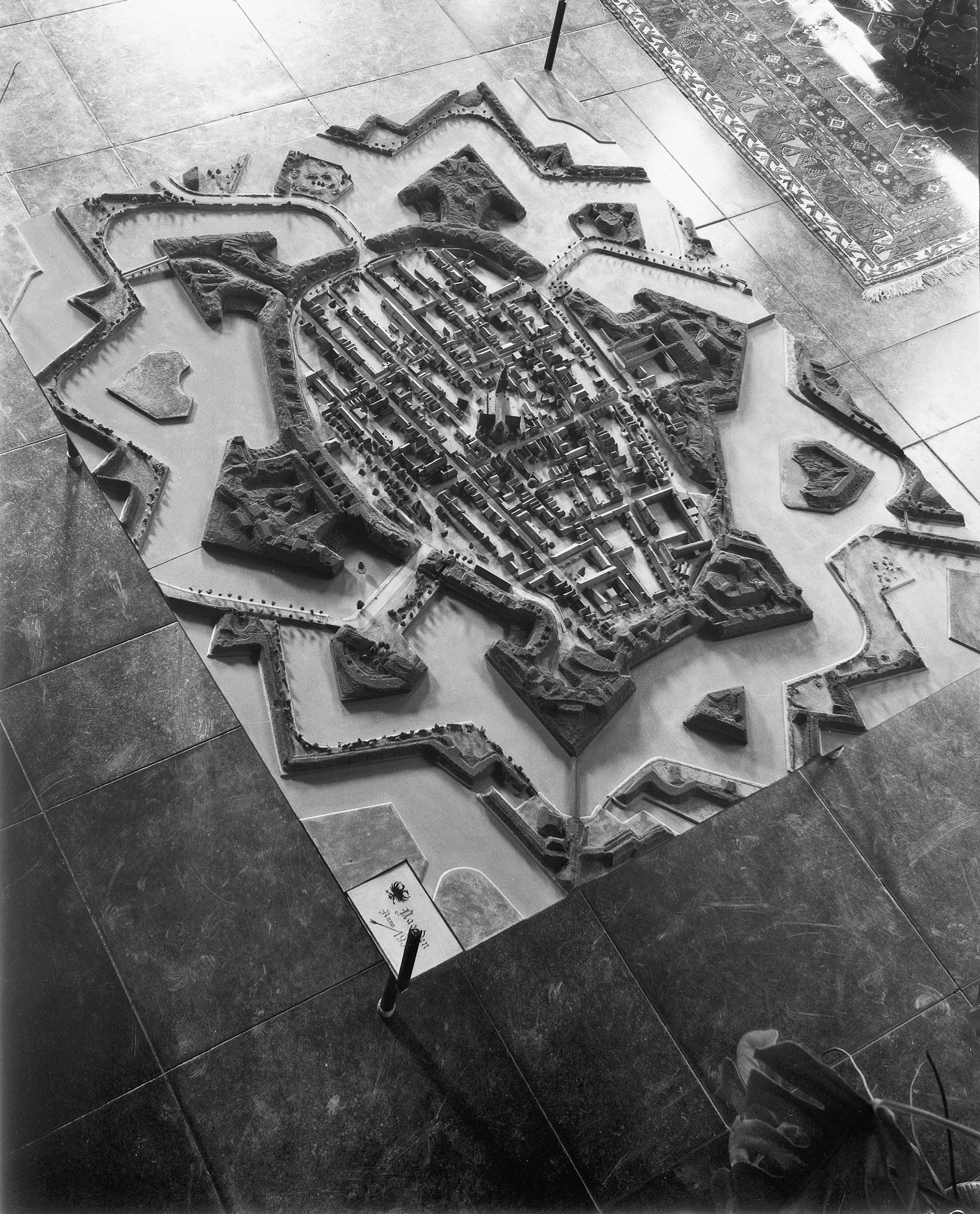 A bastion fort or ''trace italienne'' (a phrase derived from non-standard French, literally meaning ''Italian outline'') is a
A bastion fort or ''trace italienne'' (a phrase derived from non-standard French, literally meaning ''Italian outline'') is a
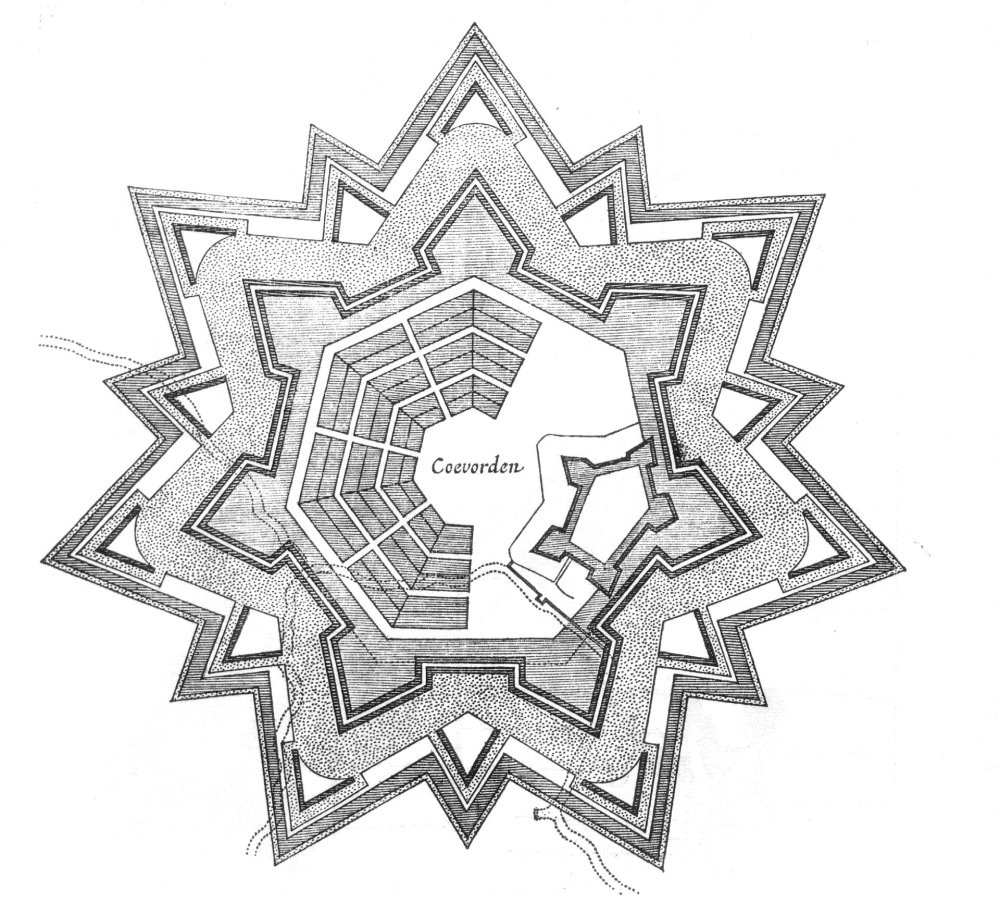 Their predecessors, medieval fortresses, were usually placed on high
Their predecessors, medieval fortresses, were usually placed on high
 Thus forts evolved complex shapes that allowed defensive batteries of cannon to command interlocking fields of fire. Forward
Thus forts evolved complex shapes that allowed defensive batteries of cannon to command interlocking fields of fire. Forward 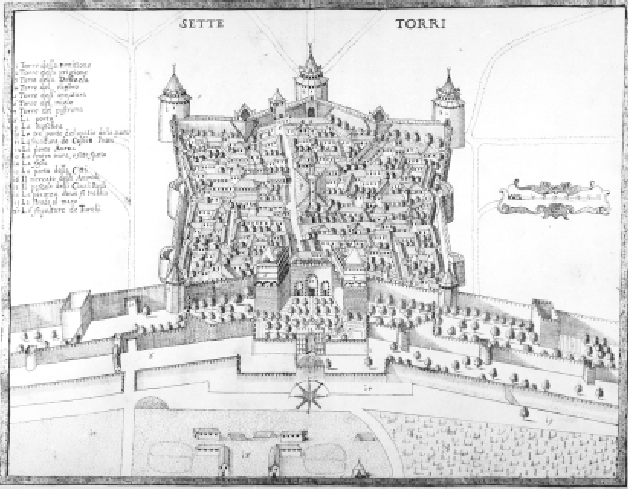 Fortifications of this type continued to be effective while the attackers were armed only with cannon, where the majority of the damage inflicted was caused by momentum from the impact of
Fortifications of this type continued to be effective while the attackers were armed only with cannon, where the majority of the damage inflicted was caused by momentum from the impact of 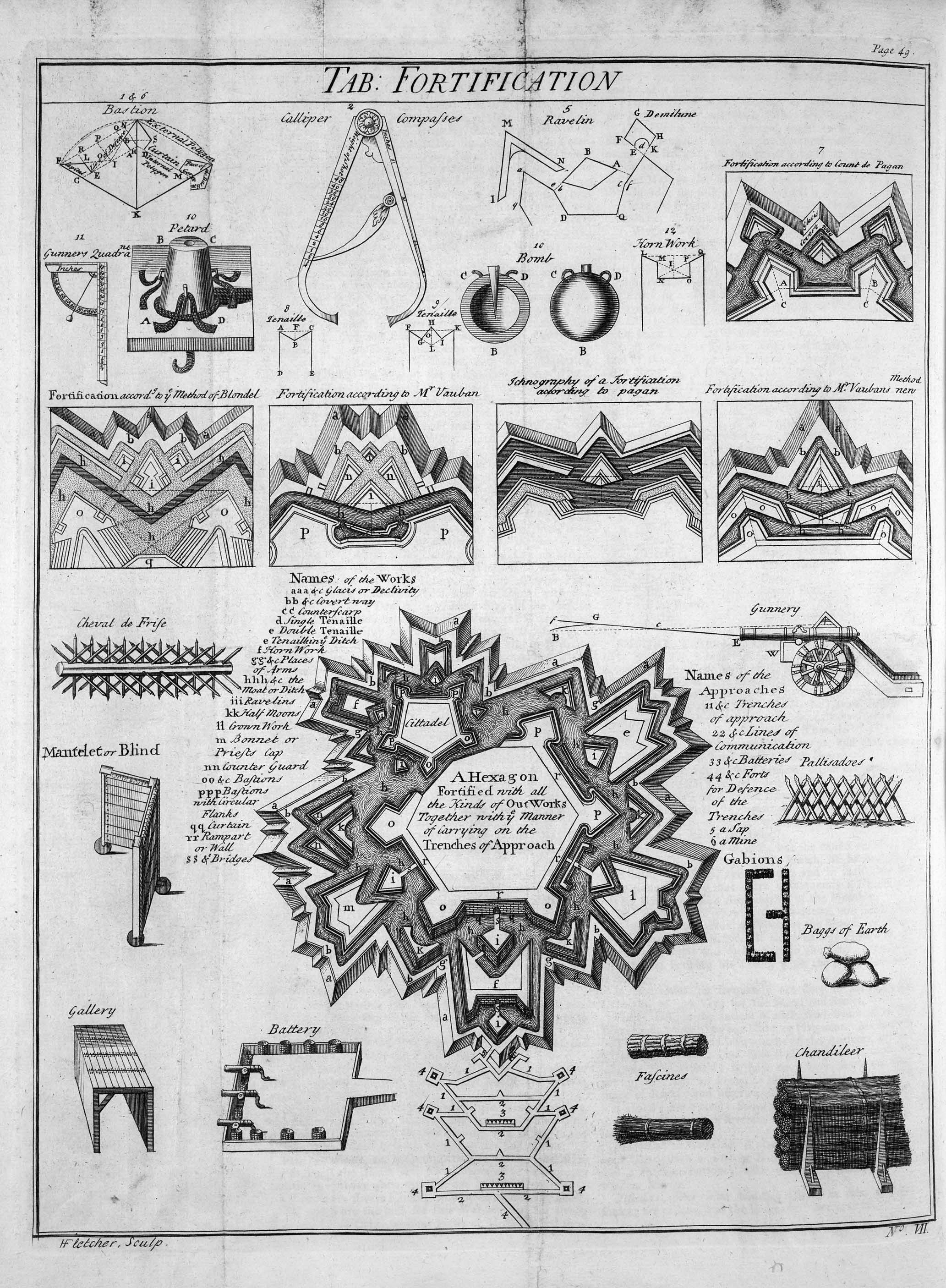


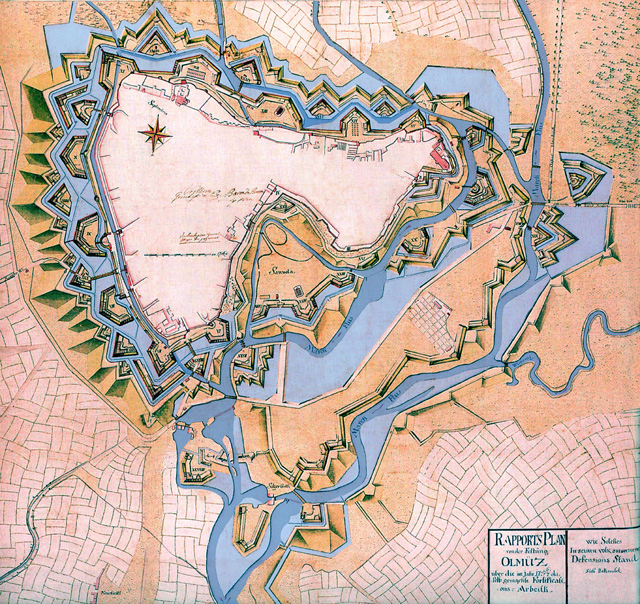 The first key instance of a ''trace Italianate'' was at the
The first key instance of a ''trace Italianate'' was at the
 Two star forts were built by the
Two star forts were built by the
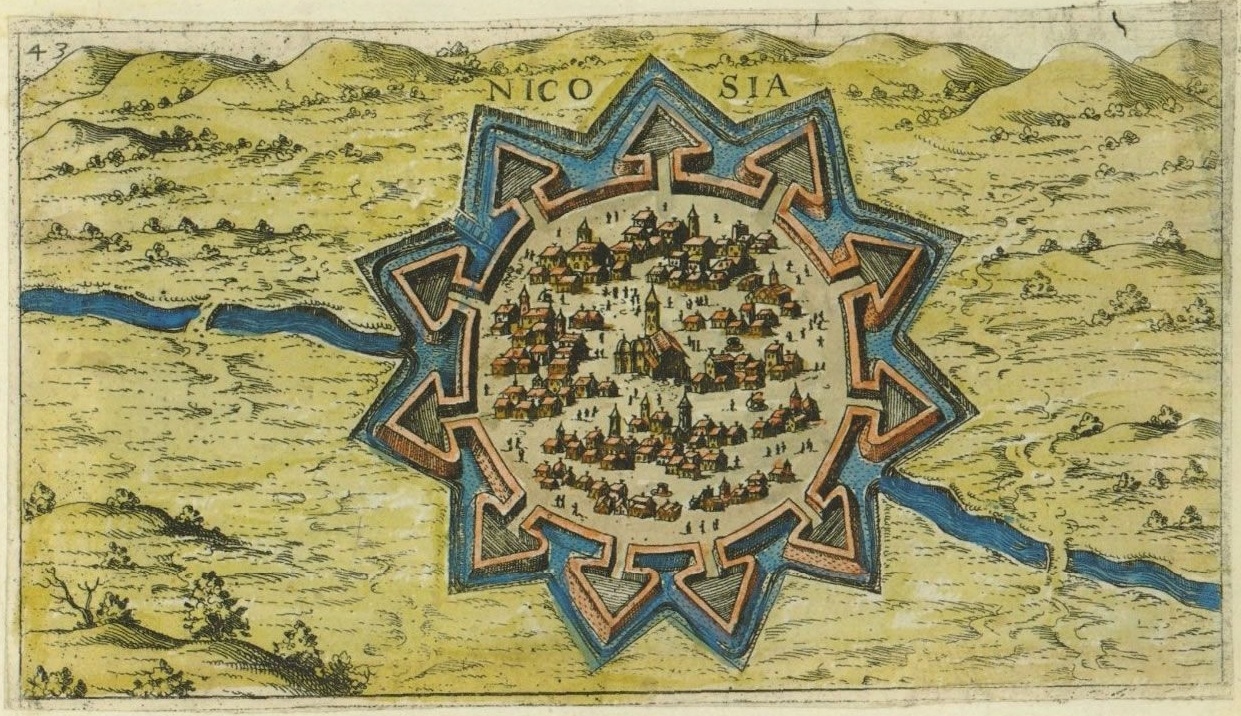 According to Geoffrey Parker in his article, ''The Military Revolution 1560–1660: A Myth?'', the appearance of the ''trace Italienne'' in early modern Europe, and the difficulty of taking such fortifications, resulted in a profound change in military strategy, most importantly, Parker argued, an increase in army sizes necessary to attack these forts. "Wars became a series of protracted sieges," Parker suggests, and open-pitch battles became "irrelevant" in regions where the ''trace Italienne'' existed. Ultimately, Parker argues, "military geography", in other words, the existence or absence of the ''trace Italienne'' in a given area, shaped military strategy in the early modern period. This is a profound alteration of the Military Revolution thesis originally proposed by Michael Roberts in 1955.
Parker's emphasis on the fortification as the key element has attracted substantial criticism from some academics, such as John A. Lynn and M. S. Kingra, particularly with respect to the claimed causal link between the new fortress design and increases in army sizes during this period.Kingra, Mahinder S. 'The Trace Italienne and the Military Revolution During the Eighty Years' War, 1567–1648.' The Journal of Military History 57, No. 3 (July, 1993): 431–446
According to Geoffrey Parker in his article, ''The Military Revolution 1560–1660: A Myth?'', the appearance of the ''trace Italienne'' in early modern Europe, and the difficulty of taking such fortifications, resulted in a profound change in military strategy, most importantly, Parker argued, an increase in army sizes necessary to attack these forts. "Wars became a series of protracted sieges," Parker suggests, and open-pitch battles became "irrelevant" in regions where the ''trace Italienne'' existed. Ultimately, Parker argues, "military geography", in other words, the existence or absence of the ''trace Italienne'' in a given area, shaped military strategy in the early modern period. This is a profound alteration of the Military Revolution thesis originally proposed by Michael Roberts in 1955.
Parker's emphasis on the fortification as the key element has attracted substantial criticism from some academics, such as John A. Lynn and M. S. Kingra, particularly with respect to the claimed causal link between the new fortress design and increases in army sizes during this period.Kingra, Mahinder S. 'The Trace Italienne and the Military Revolution During the Eighty Years' War, 1567–1648.' The Journal of Military History 57, No. 3 (July, 1993): 431–446
 In the nineteenth century, with the development of more powerful
In the nineteenth century, with the development of more powerful
Cataneo, Hieronymus, ''De arte bellica, sive, De designandis ac construendis arcibus & propugnaculis, necnon & de ijs oppugnandis, expugnandis, ac propugnandis: de itinere exercitus, ac castrametatione: quando expediat manus cum hoste conserere, ac tandem, quid imperatori sit in procinctu cauendum vel eligendum'', (1600)
at World Atlas
{{DEFAULTSORT:Star Fort Warfare of the Early Modern period Italian inventions


 A bastion fort or ''trace italienne'' (a phrase derived from non-standard French, literally meaning ''Italian outline'') is a
A bastion fort or ''trace italienne'' (a phrase derived from non-standard French, literally meaning ''Italian outline'') is a fortification
A fortification is a military construction or building designed for the defense of territories in warfare, and is also used to establish rule in a region during peacetime. The term is derived from Latin ''fortis'' ("strong") and ''facere ...
in a style that evolved during the early modern period of gunpowder
Gunpowder, also commonly known as black powder to distinguish it from modern smokeless powder, is the earliest known chemical explosive. It consists of a mixture of sulfur, carbon (in the form of charcoal) and potassium nitrate (saltpeter). T ...
when the cannon
A cannon is a large- caliber gun classified as a type of artillery, which usually launches a projectile using explosive chemical propellant. Gunpowder ("black powder") was the primary propellant before the invention of smokeless powder ...
came to dominate the battle
A battle is an occurrence of combat in warfare between opposing military units of any number or size. A war usually consists of multiple battles. In general, a battle is a military engagement that is well defined in duration, area, and for ...
field. It was first seen in the mid-fifteenth century in Italy
Italy ( it, Italia ), officially the Italian Republic, ) or the Republic of Italy, is a country in Southern Europe. It is located in the middle of the Mediterranean Sea, and its territory largely coincides with the homonymous geographical ...
. Some types, especially when combined with ravelin
A ravelin is a triangular fortification or detached outwork, located in front of the innerworks of a fortress (the curtain walls and bastions). Originally called a ''demi-lune'', after the ''lunette'', the ravelin is placed outside a castle ...
s and other outworks, resembled the related star fort of the same era.
The design of the fort is normally a polygon with bastion
A bastion or bulwark is a structure projecting outward from the curtain wall of a fortification, most commonly angular in shape and positioned at the corners of the fort. The fully developed bastion consists of two faces and two flanks, with fi ...
s at the corners of the walls. These outcroppings eliminated protected blind spots, called "dead zones", and allowed fire along the curtain from positions protected from direct fire. Many bastion forts also feature cavaliers
The term Cavalier () was first used by Roundheads as a term of abuse for the wealthier royalist supporters of King Charles I and his son Charles II of England during the English Civil War, the Interregnum, and the Restoration (1642 – ). It ...
, which are raised secondary structures based entirely inside the primary structure.
Origins
 Their predecessors, medieval fortresses, were usually placed on high
Their predecessors, medieval fortresses, were usually placed on high hill
A hill is a landform that extends above the surrounding terrain. It often has a distinct summit.
Terminology
The distinction between a hill and a mountain is unclear and largely subjective, but a hill is universally considered to be not a ...
s. From there, arrow
An arrow is a fin-stabilized projectile launched by a bow. A typical arrow usually consists of a long, stiff, straight shaft with a weighty (and usually sharp and pointed) arrowhead attached to the front end, multiple fin-like stabilizers ...
s were shot at the enemies. The enemies' hope was to either ram the gate or climb over the wall with ladder
A ladder is a vertical or inclined set of rungs or steps used for climbing or descending. There are two types: rigid ladders that are self-supporting or that may be leaned against a vertical surface such as a wall, and rollable ladders, such ...
s and overcome the defenders. For the invading force, these fortifications proved quite difficult to overcome, and accordingly, fortresses occupied a key position in warfare.
Passive ring-shaped (''Enceinte
Enceinte (from Latin incinctus: girdled, surrounded) is a French term that refers to the "main defensive enclosure of a fortification". For a castle, this is the main defensive line of wall towers and curtain walls enclosing the position. For ...
'') fortifications of the Medieval era proved vulnerable to damage or destruction when attackers directed cannon fire on to perpendicular masonry wall. In addition, attackers that could get close to the wall were able to conduct undermining operations in relative safety, as the defenders could not shoot at them from nearby walls, until the development of Machicolation
A machicolation (french: mâchicoulis) is a floor opening between the supporting corbels of a battlement, through which stones or other material, such as boiling water, hot sand, quicklime or boiling cooking oil, could be dropped on attackers at ...
. In contrast, the bastion fortress was a very flat structure composed of many triangular bastion
A bastion or bulwark is a structure projecting outward from the curtain wall of a fortification, most commonly angular in shape and positioned at the corners of the fort. The fully developed bastion consists of two faces and two flanks, with fi ...
s, specifically designed to cover each other, and a ditch. To counteract the cannonballs, defensive walls were made lower and thicker. To counteract the fact that lower walls were easier to climb, the ditch was widened so that attacking infantry were still exposed to fire from a higher elevation, including enfilading fire from the bastions.
The outer side of the ditch was usually provided with a glacis
A glacis (; ) in military engineering is an artificial slope as part of a medieval castle or in early modern fortresses. They may be constructed of earth as a temporary structure or of stone in more permanent structure. More generally, a glacis ...
to deflect cannonballs aimed at the lower part of the main wall. Further structures, such as ravelin
A ravelin is a triangular fortification or detached outwork, located in front of the innerworks of a fortress (the curtain walls and bastions). Originally called a ''demi-lune'', after the ''lunette'', the ravelin is placed outside a castle ...
s, tenailles, hornworks or crownwork
A crownwork is an element of the trace italienne system of fortification and is effectively an expanded hornwork (a type of outwork). It consists of a full bastion with the walls on either side ending in half bastions from which longer flank wal ...
s, and even detached forts could be added to create complex outer works to further protect the main wall from artillery, and sometimes provide additional defensive positions. They were built of many materials, usually earth and brick
A brick is a type of block used to build walls, pavements and other elements in masonry construction. Properly, the term ''brick'' denotes a block composed of dried clay, but is now also used informally to denote other chemically cured cons ...
, as brick does not shatter on impact from a cannonball as stone
In geology, rock (or stone) is any naturally occurring solid mass or aggregate of minerals or mineraloid matter. It is categorized by the minerals included, its Chemical compound, chemical composition, and the way in which it is formed. Rocks ...
does.
Bastion fortifications were further developed in the late fifteenth and early sixteenth centuries, primarily in response to the French invasion of the Italian peninsula. The French army was equipped with new cannon and bombards that were easily able to destroy traditional fortifications built in the Middle Ages
In the history of Europe, the Middle Ages or medieval period lasted approximately from the late 5th to the late 15th centuries, similar to the post-classical period of global history. It began with the fall of the Western Roman Empire ...
. Star forts were employed by Michelangelo
Michelangelo di Lodovico Buonarroti Simoni (; 6 March 1475 – 18 February 1564), known as Michelangelo (), was an Italian sculptor, painter, architect, and poet of the High Renaissance. Born in the Republic of Florence, his work was ins ...
in the defensive earthworks of Florence
Florence ( ; it, Firenze ) is a city in Central Italy and the capital city of the Tuscany region. It is the most populated city in Tuscany, with 383,083 inhabitants in 2016, and over 1,520,000 in its metropolitan area.Bilancio demografico ...
, and refined in the sixteenth century by Baldassare Peruzzi
Baldassare Tommaso Peruzzi (7 March 1481 – 6 January 1536) was an Italian architect and painter, born in a small town near Siena (in Ancaiano, ''frazione'' of Sovicille) and died in Rome. He worked for many years with Bramante, Raphael, and lat ...
and Vincenzo Scamozzi
Vincenzo Scamozzi (2 September 1548 – 7 August 1616) was an Italian architect and a writer on architecture, active mainly in Vicenza and Republic of Venice area in the second half of the 16th century. He was perhaps the most important figure t ...
. The design spread out of Italy in the 1530s and 1540s.
It was employed heavily throughout Europe for the following three centuries. Italian engineers were heavily in demand throughout Europe to help build the new fortifications. The late-seventeenth-century architects Menno van Coehoorn
Menno, Baron van Coehoorn (; March 1641 – 17 March 1704) was a Dutch soldier and engineer, regarded as one of the most significant figures in Dutch military history. In an era when siege warfare dominated military campaigns, he and his French ...
and especially Vauban, Louis XIV
Louis XIV (Louis Dieudonné; 5 September 16381 September 1715), also known as Louis the Great () or the Sun King (), was List of French monarchs, King of France from 14 May 1643 until his death in 1715. His reign of 72 years and 110 days is the Li ...
's military engineer, are considered to have taken the form to its logical extreme. "Fortresses... acquired ravelins
A ravelin is a triangular fortification or detached outwork, located in front of the innerworks of a fortress (the curtain walls and bastions). Originally called a ''demi-lune'', after the ''lunette'', the ravelin is placed outside a castle ...
and redoubt
A redoubt (historically redout) is a fort or fort system usually consisting of an enclosed defensive emplacement outside a larger fort, usually relying on earthworks, although some are constructed of stone or brick. It is meant to protect soldi ...
s, bonnettes and lunettes
A lunette (French ''lunette'', "little moon") is a half-moon shaped architectural space, variously filled with sculpture, painted, glazed, filled with recessed masonry, or void.
A lunette may also be segmental, and the arch may be an arc taken ...
, tenailles and tenaillons, counterguards and crownworks
A crownwork is an element of the trace italienne system of fortification and is effectively an expanded hornwork (a type of outwork). It consists of a full bastion with the walls on either side ending in half bastions from which longer flank ...
and hornworks
A hornwork is an element of the Italian bastion system of fortification. Its face is flanked with a pair of demi-bastions.
It is distinguished from a crownwork, because crownworks contain full bastions at their centers. They are both outwork
...
and curvettes and fausse brayes and scarps and cordons and banquette
A banquette is a small footpath or elevated step along the inside of a rampart or parapet of a fortification. Musketeers atop it were able to view the counterscarp, or fire on enemies in the moat. A typical size is a foot and a half (approxima ...
s and counterscarp
A scarp and a counterscarp are the inner and outer sides, respectively, of a ditch or moat used in fortifications. Attackers (if they have not bridged the ditch) must descend the counterscarp and ascend the scarp. In permanent fortifications th ...
s..."
The star-shaped fortification had a formative influence on the patterning of the Renaissance ideal city
An ideal city is the concept of a plan for a city that has been conceived in accordance with a particular rational or moral objective.
Concept
The "ideal" nature of such a city may encompass the moral, spiritual and juridical qualities of ci ...
: "The Renaissance was hypnotized by one city type which for a century and a half—from Filarete to Scamozzi—was impressed upon all utopian schemes: this is the star-shaped city." In the 19th century, the development of the explosive shell changed the nature of defensive fortifications. Elvas
Elvas () is a Portuguese municipality, former episcopal city and frontier fortress of easternmost central Portugal, located in the district of Portalegre in Alentejo. It is situated about east of Lisbon, and about west of the Spanish fortress ...
, in Portugal
Portugal, officially the Portuguese Republic ( pt, República Portuguesa, links=yes ), is a country whose mainland is located on the Iberian Peninsula of Southwestern Europe, and whose territory also includes the Atlantic archipelagos of th ...
is considered by some to be the best surviving example of the Dutch school of fortifications.
Slopes
When the newly-effective manoeuvrable siege cannon came into military strategy in the fifteenth century, the response frommilitary engineers
Military engineering is loosely defined as the art, science, and practice of designing and building military works and maintaining lines of military transport and military communications. Military engineers are also responsible for logistics b ...
was to arrange for the walls to be embedded into ditches fronted by earthen slopes (glacis
A glacis (; ) in military engineering is an artificial slope as part of a medieval castle or in early modern fortresses. They may be constructed of earth as a temporary structure or of stone in more permanent structure. More generally, a glacis ...
) so that they could not be attacked by destructive direct fire
Direct fire or line-of-sight fire refers to firing of a ranged weapon whose projectile is launched directly at a target within the line-of-sight of the user. The firing weapon must have a sighting device and an unobstructed view to the target, w ...
and to have the walls topped by earthen banks that absorbed and largely dissipated the energy of plunging fire
Plunging fire is a form of indirect fire, where gunfire is fired at a trajectory to make it fall on its target from above. It is normal at the high trajectories used to attain long range, and can be used deliberately to attack a target not susce ...
. Where conditions allowed, as in Fort Manoel
Fort Manoel ( mt, Forti Manoel or ''Fortizza Manoel'') is a star fort on Manoel Island in Gżira, Malta. It was built in the 18th century by the Order of Saint John, during the reign of Grand Master António Manoel de Vilhena, after whom it ...
in Malta
Malta ( , , ), officially the Republic of Malta ( mt, Repubblika ta' Malta ), is an island country in the Mediterranean Sea. It consists of an archipelago, between Italy and Libya, and is often considered a part of Southern Europe. It lies ...
, the ditches were cut into the native rock, and the wall at the inside of the ditch was simply unquarried native rock. As the walls became lower, they also became more vulnerable to assault.
Dead zone
The rounded shape that had previously been dominant for the design of turrets created "dead space", or "dead zones", which were relatively sheltered from defending fire, because direct fire from other parts of the defences could not be directed around curved walls. To prevent this, what had previously been round or squareturret
Turret may refer to:
* Turret (architecture), a small tower that projects above the wall of a building
* Gun turret, a mechanism of a projectile-firing weapon
* Objective turret, an indexable holder of multiple lenses in an optical microscope
* M ...
s were extended into diamond-shaped points to eliminate potential cover for attacking troops. The ditches and walls channelled the attackers into carefully constructed zwinger
"" () is a German word for outer ward or outer bailey. It represents an open kill zone area between two defensive walls that is used for defensive purposes. s were built in the post-classical and early modern periods to improve the defence ...
, bailey, or similar " kill zone" areas where the attackers had no place to shelter from the fire of the defenders.
Enfilade
A further and more subtle change was to move from a passive model of defence to an active one. The lower walls were more vulnerable to being stormed, and the protection that the earthen banking provided against direct fire failed if the attackers could occupy the slope on the outside of the ditch and mount an attacking cannon there. Therefore, the shape was designed to make maximum use of ''enfilade
Enfilade and defilade are concepts in military tactics used to describe a military formation's exposure to enemy fire. A formation or position is "in enfilade" if weapon fire can be directed along its longest axis. A unit or position is "in de ...
'' (or flanking) fire against any attackers who should reach the base of any of the walls. The indentations in the base of each point on the star sheltered cannons. Those cannons would have a clear line of fire directly down the edge of the neighbouring points, while their point of the star was protected by fire from the base of those points. The evolution of these ideas can be seen in transitional fortifications such as Sarzana
Sarzana (, ; lij, Sarzann-a) is a town, '' comune'' (municipality) and former short-lived Catholic bishopric in the Province of La Spezia, Liguria, Italy. It is east of Spezia, on the railway to Pisa, at the point where the railway to Parm ...
in northwest Italy.
Other changes
 Thus forts evolved complex shapes that allowed defensive batteries of cannon to command interlocking fields of fire. Forward
Thus forts evolved complex shapes that allowed defensive batteries of cannon to command interlocking fields of fire. Forward batteries
Battery most often refers to:
* Electric battery, a device that provides electrical power
* Battery (crime), a crime involving unlawful physical contact
Battery may also refer to:
Energy source
*Automotive battery, a device to provide power t ...
commanded the slopes which defended walls deeper in the complex from direct fire. The defending cannon were not simply intended to deal with attempts to storm the walls, but to actively challenge attacking cannon and deny them approach close enough to the fort to engage in direct fire against the vulnerable walls.
The key to the fort's defence moved to the outer edge of the ditch surrounding the fort, known as the covered way, or covert way. Defenders could move relatively safely in the cover of the ditch and could engage in active countermeasures to keep control of the glacis
A glacis (; ) in military engineering is an artificial slope as part of a medieval castle or in early modern fortresses. They may be constructed of earth as a temporary structure or of stone in more permanent structure. More generally, a glacis ...
, the open slope that lay outside the ditch, by creating defensive earthworks to deny the enemy access to the glacis and thus to firing points that could bear directly onto the walls and by digging counter mine
Tunnel warfare involves war being conducted in tunnel and other underground cavities. It often includes the construction of underground facilities (mining or undermining) in order to attack or defend, and the use of existing natural caves and ...
s to intercept and disrupt attempts to mine the fort walls.
Compared to medieval fortification
Medieval fortification refers to medieval military methods that cover the development of fortification construction and use in Europe, roughly from the fall of the Western Roman Empire to the Renaissance. During this millennium, fortifications ...
s, forts became both lower and larger in area, providing defence in depth
Defence in depth (also known as deep defence or elastic defence) is a military strategy that seeks to delay rather than prevent the advance of an attacker, buying time and causing additional casualties by yielding space. Rather than defeating ...
, with tiers of defences that an attacker needed to overcome in order to bring cannon to bear on the inner layers of defences.
Firing emplacements for defending cannon were heavily defended from bombardment by external fire, but open towards the inside of the fort, not only to diminish their usefulness to the attacker should they be overcome, but also to allow the large volumes of smoke that the defending cannon would generate to dissipate.
 Fortifications of this type continued to be effective while the attackers were armed only with cannon, where the majority of the damage inflicted was caused by momentum from the impact of
Fortifications of this type continued to be effective while the attackers were armed only with cannon, where the majority of the damage inflicted was caused by momentum from the impact of solid shot
A round shot (also called solid shot or simply ball) is a solid spherical projectile without explosive charge, launched from a gun. Its diameter is slightly less than the bore of the barrel from which it is shot. A round shot fired from a lar ...
. Because only low explosives such as black powder were available, explosive shells were largely ineffective against such fortifications. The development of mortars
Mortar may refer to:
* Mortar (weapon), an indirect-fire infantry weapon
* Mortar (masonry), a material used to fill the gaps between blocks and bind them together
* Mortar and pestle, a tool pair used to crush or grind
* Mortar, Bihar, a villag ...
, high explosives
An explosive (or explosive material) is a reactive substance that contains a great amount of potential energy that can produce an explosion if released suddenly, usually accompanied by the production of light, heat, sound, and pressure. An expl ...
, and the consequent large increase in the destructive power of explosive shells and thus plunging fire rendered the intricate geometry of such fortifications irrelevant. Warfare was to become more mobile. It took, however, many years to abandon the old fortress thinking.

Construction
Bastion forts were very expensive.Amsterdam
Amsterdam ( , , , lit. ''The Dam on the River Amstel'') is the capital and most populous city of the Netherlands, with The Hague being the seat of government. It has a population of 907,976 within the city proper, 1,558,755 in the urban ar ...
's 22 bastions cost 11 million florins, and Siena
Siena ( , ; lat, Sena Iulia) is a city in Tuscany, Italy. It is the capital of the province of Siena.
The city is historically linked to commercial and banking activities, having been a major banking center until the 13th and 14th centur ...
in 1544 bankrupted itself to pay for its defences. For this reason, bastion forts were often improvised from earlier defences. Medieval curtain walls were torn down, and a ditch was dug in front of them. The earth used from the excavation was piled behind the walls to create a solid structure. While purpose-built fortifications would often have a brick fascia because of the material's ability to absorb the shock of artillery fire, many improvised defences cut costs by leaving this stage out and instead opting for more earth. Improvisation could also consist of lowering medieval round towers and infilling them with earth to strengthen the structures.
It was also often necessary to widen and deepen the ditch outside the walls to create a more effective barrier to frontal assault and mining. Engineers from the 1520s were also building massive, gently sloping banks of earth called glacis
A glacis (; ) in military engineering is an artificial slope as part of a medieval castle or in early modern fortresses. They may be constructed of earth as a temporary structure or of stone in more permanent structure. More generally, a glacis ...
in front of ditches so that the walls were almost totally hidden from horizontal artillery fire. The main benefit of the glaces was to deny enemy artillery the ability to fire point-blank. The lower the angle of elevation, the higher the stopping power.

 The first key instance of a ''trace Italianate'' was at the
The first key instance of a ''trace Italianate'' was at the Papal
The pope ( la, papa, from el, πάππας, translit=pappas, 'father'), also known as supreme pontiff ( or ), Roman pontiff () or sovereign pontiff, is the bishop of Rome (or historically the patriarch of Rome), head of the worldwide Cathol ...
port of Civitavecchia
Civitavecchia (; meaning "ancient town") is a city and ''comune'' of the Metropolitan City of Rome in the central Italian region of Lazio. A sea port on the Tyrrhenian Sea, it is located west-north-west of Rome. The harbour is formed by two pier ...
, where the original walls were lowered and thickened because the stone tended to shatter under bombardment.
Effectiveness
The first major battle which truly showed the effectiveness of ''trace Italienne'' was the defence ofPisa
Pisa ( , or ) is a city and ''comune'' in Tuscany, central Italy, straddling the Arno just before it empties into the Ligurian Sea. It is the capital city of the Province of Pisa. Although Pisa is known worldwide for its leaning tower, the ci ...
in 1500 against a combined Florentine and French
French (french: français(e), link=no) may refer to:
* Something of, from, or related to France
** French language, which originated in France, and its various dialects and accents
** French people, a nation and ethnic group identified with Franc ...
army. With the original medieval fortifications beginning to crumble to French cannon fire, the Pisans constructed an earthen rampart
Rampart may refer to:
* Rampart (fortification), a defensive wall or bank around a castle, fort or settlement
Rampart may also refer to:
* "O'er the Ramparts We Watched" is a key line from " The Star-Spangled Banner", the national anthem of the ...
behind the threatened sector. It was discovered that the sloping earthen rampart could be defended against escalade
{{Unreferenced, date=May 2007
Escalade is the act of scaling defensive walls or ramparts with the aid of ladders. Escalade was a prominent feature of sieges in ancient and medieval warfare, and though it is no longer common in modern warfare ...
and was also much more resistant to cannon fire than the curtain wall it had replaced.
The second siege was that of Padua
Padua ( ; it, Padova ; vec, Pàdova) is a city and ''comune'' in Veneto, northern Italy. Padua is on the river Bacchiglione, west of Venice. It is the capital of the province of Padua. It is also the economic and communications hub of the ...
in 1509. A monk engineer named Fra Giocondo
Giovanni Giocondo, Order of Friars Minor, (c. 1433 – 1515) was an Italian friar, architect, antiquary, archaeologist, and classical scholar.
Biography
Giovanni Giocondo was born in Verona around 1433. He joined the Dominican Order at the ...
, trusted with the defence of the Venetian
Venetian often means from or related to:
* Venice, a city in Italy
* Veneto, a region of Italy
* Republic of Venice (697–1797), a historical nation in that area
Venetian and the like may also refer to:
* Venetian language, a Romance language s ...
city, cut down the city's medieval wall and surrounded the city with a broad ditch
A ditch is a small to moderate divot created to channel water. A ditch can be used for drainage, to drain water from low-lying areas, alongside roadways or fields, or to channel water from a more distant source for plant irrigation. Ditches ar ...
that could be swept by flanking fire from gun ports set low in projections extending into the ditch. Finding that their cannon fire made little impression on these low ramparts, the French and allied besiegers made several bloody and fruitless assaults and then withdrew.
The new type of fortification also played a role in the numerous Mediterranean wars, slowing down the Ottoman expansion. Although Rhodes
Rhodes (; el, Ρόδος , translit=Ródos ) is the largest and the historical capital of the Dodecanese islands of Greece. Administratively, the island forms a separate municipality within the Rhodes regional unit, which is part of the S ...
had been partially upgraded to the new type of fortifications after the 1480 siege, it was still conquered in 1522; nevertheless it was a long and bloody siege, and the besieged had no hope of outside relief because the island was close to the Ottoman power base and far from any allies. On the other hand, the Ottomans failed to take Corfu in 1537 in no small part because of the new fortifications, and several attempts spanning almost two centuries (another major one was in 1716) also failed.
 Two star forts were built by the
Two star forts were built by the Order of Saint John
The Order of Knights of the Hospital of Saint John of Jerusalem ( la, Ordo Fratrum Hospitalis Sancti Ioannis Hierosolymitani), commonly known as the Knights Hospitaller (), was a medieval and early modern Catholic military order. It was headq ...
on the island of Malta
Malta ( , , ), officially the Republic of Malta ( mt, Repubblika ta' Malta ), is an island country in the Mediterranean Sea. It consists of an archipelago, between Italy and Libya, and is often considered a part of Southern Europe. It lies ...
in 1552, Fort Saint Elmo
Fort Saint Elmo ( mt, Forti Sant'Iermu) is a star fort in Valletta, Malta. It stands on the seaward shore of the Sciberras Peninsula that divides Marsamxett Harbour from Grand Harbour, and commands the entrances to both harbours along with Fort ...
and Fort Saint Michael
Fort Saint Michael ( mt, Forti San Mikiel) was a small fort in the land front of the city of Senglea, Malta. It was originally built in the 1552 and it played a significant role in the Great Siege of Malta of 1565. Following the siege, it was r ...
. Fort Saint Elmo played a critical role in the Ottoman siege of 1565 when it managed to hold out heavy bombardment for over a month. Eventually it fell, but the Ottoman casualties were very high, and it bought time for the relief force which arrived from Sicily
(man) it, Siciliana (woman)
, population_note =
, population_blank1_title =
, population_blank1 =
, demographics_type1 = Ethnicity
, demographics1_footnotes =
, demographi ...
to relieve the rest of the besieged island. The star fort therefore played a crucial and decisive role in the siege.
After the fall of Venice to Napoleon, Corfu was occupied in 1797 by the French republican armies. The now ancient fortifications were still of some value at this point. A Russian–Ottoman–English alliance led at sea by Admiral Ushakov and with troops sent by Ali Pasha retook Corfu in 1799 after a four-month siege, when the garrison led by general Louis François Jean Chabot
Louis François Jean Chabot (27 April 1757 in Niort – 11 March 1837 in Sansais) was a French general. He was in charge of the French forces at the Siege of Corfu (1798–99) Siege of Corfu may refer to:
* Siege of Corfu (1537) by the Ott ...
, being short of provisions and having lost the key island of Vido
Vido ( el, Βίδο) is an island of the Ionian Islands group of Greece.
It is a small island (less than a kilometer in diameter) at the mouth of the port of Corfu.
History
The island was known to the ancients as Ptychia ( grc, Πτυχία ...
at the entrance of the port, surrendered and was allowed passage back to France.
Role in the military revolution
 According to Geoffrey Parker in his article, ''The Military Revolution 1560–1660: A Myth?'', the appearance of the ''trace Italienne'' in early modern Europe, and the difficulty of taking such fortifications, resulted in a profound change in military strategy, most importantly, Parker argued, an increase in army sizes necessary to attack these forts. "Wars became a series of protracted sieges," Parker suggests, and open-pitch battles became "irrelevant" in regions where the ''trace Italienne'' existed. Ultimately, Parker argues, "military geography", in other words, the existence or absence of the ''trace Italienne'' in a given area, shaped military strategy in the early modern period. This is a profound alteration of the Military Revolution thesis originally proposed by Michael Roberts in 1955.
Parker's emphasis on the fortification as the key element has attracted substantial criticism from some academics, such as John A. Lynn and M. S. Kingra, particularly with respect to the claimed causal link between the new fortress design and increases in army sizes during this period.Kingra, Mahinder S. 'The Trace Italienne and the Military Revolution During the Eighty Years' War, 1567–1648.' The Journal of Military History 57, No. 3 (July, 1993): 431–446
According to Geoffrey Parker in his article, ''The Military Revolution 1560–1660: A Myth?'', the appearance of the ''trace Italienne'' in early modern Europe, and the difficulty of taking such fortifications, resulted in a profound change in military strategy, most importantly, Parker argued, an increase in army sizes necessary to attack these forts. "Wars became a series of protracted sieges," Parker suggests, and open-pitch battles became "irrelevant" in regions where the ''trace Italienne'' existed. Ultimately, Parker argues, "military geography", in other words, the existence or absence of the ''trace Italienne'' in a given area, shaped military strategy in the early modern period. This is a profound alteration of the Military Revolution thesis originally proposed by Michael Roberts in 1955.
Parker's emphasis on the fortification as the key element has attracted substantial criticism from some academics, such as John A. Lynn and M. S. Kingra, particularly with respect to the claimed causal link between the new fortress design and increases in army sizes during this period.Kingra, Mahinder S. 'The Trace Italienne and the Military Revolution During the Eighty Years' War, 1567–1648.' The Journal of Military History 57, No. 3 (July, 1993): 431–446
Obsolescence
 In the nineteenth century, with the development of more powerful
In the nineteenth century, with the development of more powerful artillery
Artillery is a class of heavy military ranged weapons that launch munitions far beyond the range and power of infantry firearms. Early artillery development focused on the ability to breach defensive walls and fortifications during si ...
and explosive shells, star forts were replaced by simpler but more robust polygonal fort
A polygonal fort is a type of fortification originating in France in the late 18th century and fully developed in Germany in the first half of the 19th century. Unlike earlier forts, polygonal forts had no bastions, which had proved to be vulnerabl ...
s. In the twentieth century, with the development of tanks and aerial warfare during and after the First World War, fixed fortifications became and have remained less important than in previous centuries.
Star forts reappeared during the early 21st century French intervention in Mali where they were built by the 17th Parachute Engineer Regiment
The 17th Parachute Engineer Regiment (french: 17e Régiment de Génie Parachutiste, 17e RGP) is heir to the traditions of the 17th Colonial Engineer Regiment (french: 17e Régiment Colonial du Génie, 17eRGC) which illustrated itself during Wor ...
.
See also
* Venetian Works of Defence - AUNESCO
The United Nations Educational, Scientific and Cultural Organization is a List of specialized agencies of the United Nations, specialized agency of the United Nations (UN) aimed at promoting world peace and security through international coope ...
World Heritage Site
A World Heritage Site is a landmark or area with legal protection by an international convention administered by the United Nations Educational, Scientific and Cultural Organization (UNESCO). World Heritage Sites are designated by UNESCO for ...
comprising six of the most outstanding examples of early bastion fort design.
* Suomenlinna
Suomenlinna (; until 1918 Viapori, ), or Sveaborg (), is an inhabited sea fortress the Suomenlinna district is on eight islands of which six have been fortified; it is about 4 km southeast of the city center of Helsinki, the capital of Finl ...
- A later example of the bastion fort and a World Heritage Site, built in 1758.
* Crenellation
A battlement in defensive architecture, such as that of city walls or castles, comprises a parapet (i.e., a defensive low wall between chest-height and head-height), in which gaps or indentations, which are often rectangular, occur at interva ...
* List of established military terms
This is a list of established military terms which have been in use for at least 50 years. Since technology and doctrine have changed over time, not all of them are in current use, or they may have been superseded by more modern terms. However, the ...
* List of star forts
This is a list of bastion forts.
Angola
* Fortaleza de São Miguel, Luanda
Antigua and Barbuda
* Fort James, Antigua and Barbuda, Fort James
Bahrain
* Forte de Barém - also known as the Qal'at al-Bahrain
Brazil
*Fort Orange (Dutch ...
* Mathematics and architecture
Mathematics and architecture are related, since, as with other arts, architects use mathematics for several reasons. Apart from the mathematics needed when engineering buildings, architects use geometry: to define the spatial form of a build ...
*Sébastien Le Prestre de Vauban
Sébastien Le Prestre de Vauban, Seigneur de Vauban, later Marquis de Vauban (baptised 15 May 163330 March 1707), commonly referred to as ''Vauban'' (), was a French military engineer who worked under Louis XIV. He is generally considered the ...
*Menno van Coehoorn
Menno, Baron van Coehoorn (; March 1641 – 17 March 1704) was a Dutch soldier and engineer, regarded as one of the most significant figures in Dutch military history. In an era when siege warfare dominated military campaigns, he and his French ...
* Erik Dahlberg
''
Count Erik Jönsson Dahlbergh (10 October 162516 January 1703) was a Swedish military engineer, Governor-general and Field marshal. He rose to the level of nobility through his military competence. As an architect and draftsman, he was reno ...
Notes
References
* af Hällström, Olof (2004) ''Sveaborg – The island fortress off Helsinki'', * Duffy, C. (1975) ''Fire & Stone, The Science of Fortress Warfare 1660–1860'',External links
Cataneo, Hieronymus, ''De arte bellica, sive, De designandis ac construendis arcibus & propugnaculis, necnon & de ijs oppugnandis, expugnandis, ac propugnandis: de itinere exercitus, ac castrametatione: quando expediat manus cum hoste conserere, ac tandem, quid imperatori sit in procinctu cauendum vel eligendum'', (1600)
at World Atlas
{{DEFAULTSORT:Star Fort Warfare of the Early Modern period Italian inventions